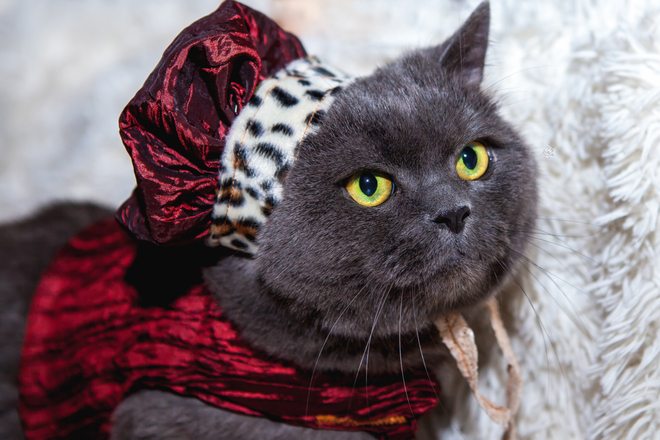Authored By: JoAnn Lutmer-Paulson
Should you use pet Halloween costumes? When Halloween rolls around, you may find that costume fever hits you, your kids, and maybe even your spouse. For those of us with pets (especially those of us with pets, but without any kids to dress up), the sheer adorableness of the costumes available begins to entrance us. Soon we imagine our beloved pooch or kitten spending Halloween in a dinosaur, pumpkin, or even a penguin alter ego.
Pet Halloween Costumes Aren’t Pet Clothes
So what is the downside of pet Halloween costumes? Really, the downside is whether or not your pet wants to be dressed up.When winter comes, owners of small or hairless pets may have to insist on a sweater or coat being worn outside, even if our dog or cat is resistant to the idea. In this circumstance, we at least have logic and safety on our side, so the fact that Fido may not like to wear a sweater can be justifiably overlooked.
Unfortunately, a Halloween costume is not quite in the same category, no matter how cute your feline might look dressed up as an angel. Luckily, there are a few things you can do to ease your dog or cat into wearing a costume. Like everything else, sometimes a pet simply needs a chance to acclimate slowly.Start by choosing one piece of the costume that involves as little discomfort to your pet as possible. A hat, scarf, or body piece that attaches with Velcro under the belly might be a good choice.
Acclimating Your Pet to a Halloween Costume
Avoid anything that you have to put your pet’s legs through at this point. Start off by having your pet wear this object or piece of the costume for a short time, such as 5 minutes. Then remove it from your pet. Continue to do this, slowly increasing the time your pet wears the costume, over several days. Once your pet seems acclimated to this piece, consider adding other pieces at the same time. Continue lengthening the time period that your animal is expected to wear the outfit. Leave any part of the costume that requires putting your pet’s legs through sleeves until your pet seems completely acclimated to wearing the less-invasive pieces. When you start dressing them in more constrictive pieces, try to make it a two-person job if possible. This will help minimize how much time it takes to dress your pet. Continue slowly getting your pet used to their costume. Some pets are simply not going to wear their costumes.
If your pet growls, snaps, or runs away from you, especially if they do so consistently, you may have to give up the dream of your pooch or kitten decked out for Halloween. Some pets may actually become depressed when dressed, even if they allow you to dress them; again, this is an indicator that your pet may not acclimate to wearing a pet Halloween costume.But not all hope is lost!
While your pet may not acclimate to wearing a deluxe or involved Halloween costume, there are other options available that they might be more agreeable to. Some costumes simply Velcro around the belly, which most domesticated pets will allow. If your pet is particularly resistant, consider some of the costumes that only involve a simple hat or similar piece around the neck (one example could be a nice Halloween themed bandanna for your dog).
Know Your Pet
Halloween is a time for fun and frolic, not for scratches, bites, and unhappiness. If your pet is simply unused to wearing clothes, follow the above prescription. But if your pet is strongly resistant to the idea, be a loving pet parent and concede to their wishes. It’s much more fun walking around on Halloween night with a happy puppy than a miserable one.
Image via freeimages.com
